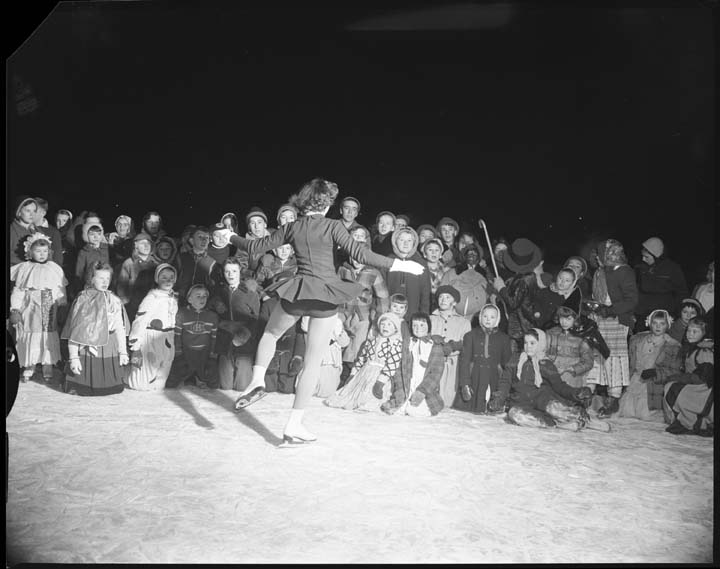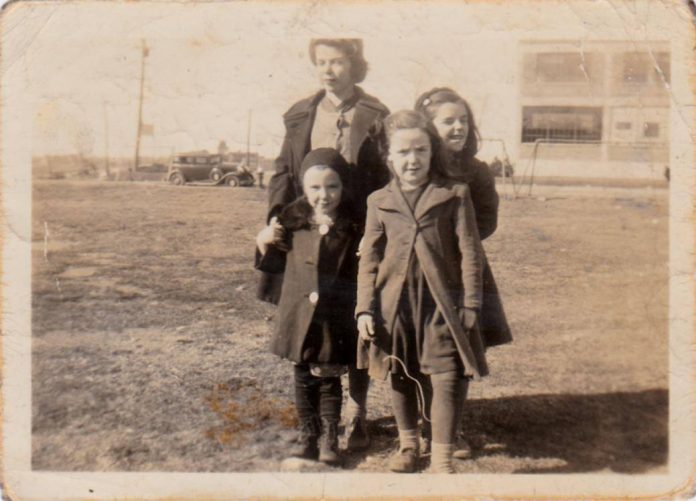This is the second of two columns about Laroche Park. The first one can be found right here.
In 1925, Alderman Gerald Sims pushed hard for the Board of Control to grade and improve Stonehurst Dump, to open an urgently needed playground on the space (it was common in this era to convert landfill sites to parks), and fought tirelessly for the required $1,800.
At the time, the St. Francis Municipal Association had proposed changing the name of Merton Street to Laroche Street, to honour Alderman Ernest Laroche, the longest continuously serving alderman on council. But there was hesitation to rename streets, and so it was Alderman Sims who suggested the new playground be named Laroche Park, which council approved. Laroche had served as alderman for 19 years, and as Director of the Central Canada Exhibition. He’d opened a dry goods and merchant tailor shop in 1907, which he converted to the Elmdale Hotel in January of 1935, shortly before his death. He was described as “an inveterate smoker of cigars… a familiar figure around the old City Hall puffing a cigar, and with cane in hand, exchanging genial greetings with aldermanic colleagues and civic officials.”
On Sat, June 19, 1926, Laroche Park playground officially opened, with several hundred children and many politicians in attendance. A baseball diamond was the highlight of the new park, and that winter, Ottawa’s 19th skating rink opened. Over the coming years, large scale events were held at the park, including winter carnivals, summer sports days, and picnics hosted by the St. Francis Municipal Association. It also became one of the top locations for Ottawa sporting events, predominately baseball, hockey and lacrosse. A washroom hut was built at the corner where Slidell and Bayview meet (this remained until 2010, when the roundabout was constructed).
Between 1929 and 1931, the septic tank was filled in and covered.
In the mid-1920s, Morris Zagerman opened a lumber and building materials yard on the north side of Bayview, and in 1933, made a trade with the City of Ottawa. He exchanged the northern portion of his yard along Bayview to the city for what became the western part of his yard (now the Russian Orthodox Church property), at the time slicing off the southern 200 feet of Laroche Park’s original footprint.
On Jan 24, 1934, there was an unfortunate accident at Laroche Park. Five-year-old Evelyn Joy Williams lost an eye when she was kicked in the face by the skate of another child during a scuffle on the rink. The ensuing lawsuit ended up in Ontario Supreme Court.
In the 1940s, a proposal to open a new garbage dump on the opposite side of Bayview was voted down. An existing dump to the east was already concern enough for area mothers, who refused to allow their kids at Laroche Park due to “rats as large as puppies which ran across the playground.”
In 1946, the Kinsmen’s Club of Ottawa donated a wading pool and the City added lights and changing huts for skaters and hockey players. That November, elm saplings were planted around the border of the Park. Sadly, many of these great old trees were recently cut down.
In 1948, the park was expanded. Three new baseball diamonds were added to “create an ideal playground.”
The most well-attended event in the park’s history occurred in February 1951, when over 3,500 people attended Laroche Park winter carnival.

The community centre building was built in the early 50s, replacing the tiny original wood frame dressing room on the southeast corner of Stonehurst and Burnside.
In 1972, a 1,500 seat arena was slated to be built behind St. Francis d’Assise Church. Hintonburg residents fought against this location, while Mechanicsville residents campaigned equally as hard for the arena to be built at Laroche Park. The City deemed Laroche too small, and it was built instead at Canterbury Park. Consideration was also given to Laroche when locating a site for the Tom Brown Arena, which was built in 1977.
Laroche Park made the news in 1976 when studies showed that the park contained high concentrations of lead in the soil, posing a “marginally dangerous” health hazard. Consultants even recommended against it being used as a park, warning that children could become ill with lead poisoning if exposed to soil and dust over long periods of time. One suggested reason given for the high lead counts was the proximity of the Zagerman scrap metal storage yard at the south end of the property.
News reports over time mention that methane gases coming to the surface often affect the quality, colour and smell of the ice in winter.
Significant money was invested into Laroche Park in 1982, reducing the number of diamonds down to two and adding lighting.
In 1989, Bayview nearly became the location of Ottawa’s new baseball stadium, plans for which included the paving over of Laroche Park to create a parking lot. Council voted this down, and ultimately built it on Coventry Road.
In the 1990s, the wading pool was replaced by a splash pad, and in 2010 the Parkdale Park gazebo was moved to Laroche.
Of course an article on the history of the park must include Tom Brown and his nephew Keith Brown. Tom helped form the first Laroche community association in 1932, established the Minor Hockey Association, and, until his death, was involved in coaching and mentoring the area children and managing the park, just as Keith continues to do today.
Through the twists and turns of history, Laroche Park has emerged as the cornerstone of the Mechanicsville community. It holds an increasingly diverse and exciting future; and we look forward to seeing what’s next.
Dave Allston is a local history buff who researches and writes house histories and also publishes a popular blog called The Kitchissippi Museum. His family has lived in Kitchissippi for six generations. Do you have early memories of the area to share? We’d love to hear them! Send your email to stories@kitchissippi.com.
